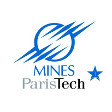Role of Alumina Coatings for Selective and Controlled Bonding of DNA on Technologically Relevant Oxide Surfaces
- Authors: Théo Calais, Benoit Playe, Jean-Marie Ducéré, Jean-François Veyan, Sara Rupich, Anne Hemeryck, Mehdi Djafari Rouhani, Carole Rossi, Yves J.Chabal, and Alain Estève
- Keywords: Stratification of cancer, prognosis, DNA methylation.
- Journal: ACS - The Journal Of Physical Chemistry C
- Date: 2015-09-21
- Link: External Link
DNA immobilization on surfaces is crucial to a number of applications. However, detailed understanding of DNA/surface chemistry remains poorly documented, especially on oxide surfaces, due to the complexity of such large molecules. This work focuses on a simpler molecule, 2-deoxythymidine-5-monophosphate (dTMP), which contains all the chemical elements of DNA. It confirms that adsorption of dTMP onto OH-terminated SiO 2 surfaces does not result in a chemical bond (dTMP readily washes off) and instead shows that dTMP chemically adsorbs on Al 2 O 3 surfaces. We combine first-principles calculations, X-ray photoelectron spectroscopy (XPS) and Fourier transform infrared (FTIR) spectroscopy to determine the bonding configuration of dTMP onto alumina surfaces controllably grown by atomic layer deposition. We demonstrate that dTMP covalently reacts with alumina. Calculations indicate that covalent bonding of all dTMP polar groups (sugar ring, phosphate group, and thymine) is thermodynamically favored. Spectroscopic data and theory-based assignments of vibrational modes show that the bonding takes place primarily through both the thymine and phosphate groups. The reactivity and the tendency for dTMP to lie flat on the surface lead to an irreversible and disorganized dTMP layering. Studies of dTMP adsorption as a function of Al 2 O 3 thickness show that the density of grafted dTMP can be controlled, with measurable amounts even above the Al 2 O 3 monolayer coverage. These findings provide technological directions for DNA-based nanotechnologies to graft DNA on surfaces that would otherwise be unreactive.

